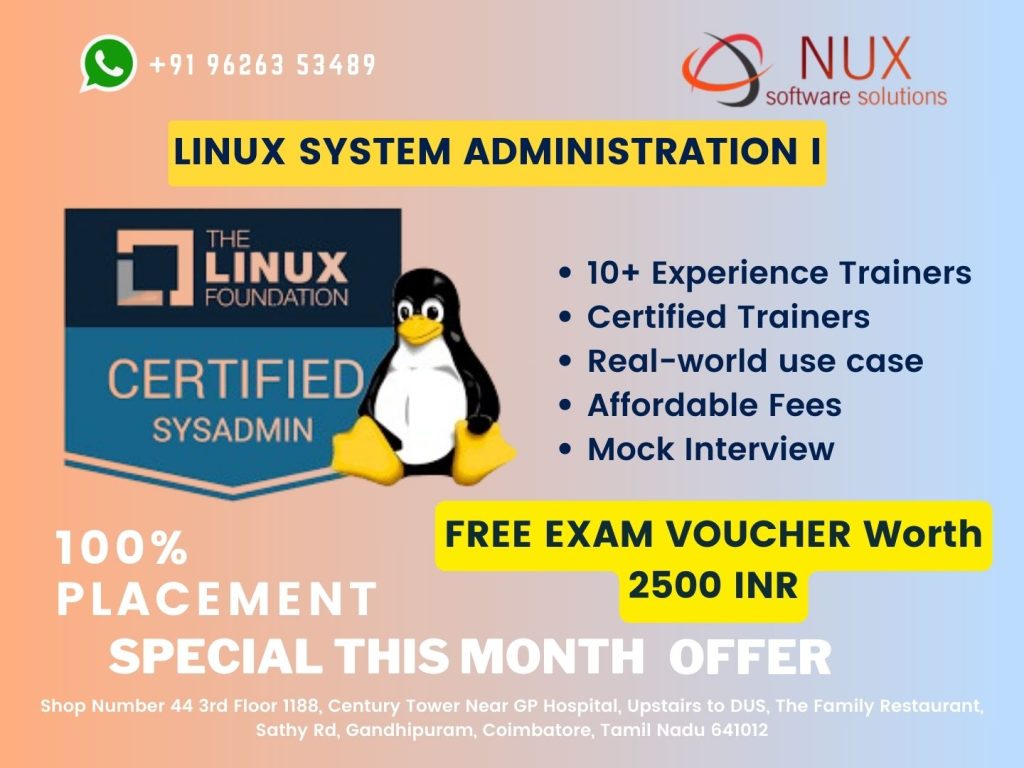LFCS (Linux Foundation Certified System Administrator)

Linux Foundation Certified System Administrator (LFCS) Training in Coimbatore
Build a Strong Foundation in Linux System Administration
The Linux Foundation Certified System Administrator (LFCS) certification is a globally recognized credential that validates your core competencies in Linux system administration. Designed for IT professionals and aspiring system administrators, this performance-based certification proves your ability to work in a command-line environment, manage Linux systems, and support various open-source applications and services.
At our Linux training center in Coimbatore, the LFCS course is structured to equip learners with practical, hands-on skills and prepare them for real-world scenarios. Whether you’re new to Linux or looking to solidify your skills, this course offers the ideal balance of theoretical knowledge and lab-based learning.
Why Choose Our LFCS Training Program?
-
Updated Curriculum Based on Latest Exam Version
-
Real-Time Lab Access and Command Line Practice
-
Experienced Trainers with Industry Expertise
-
Flexible Batch Timings (Weekday & Weekend Options)
-
Practice Tests & Exam Simulation Sessions
-
Free Study Materials, Lab Guides, and Cheat Sheets
-
Placement Guidance for Job-Ready Candidates
Who Should Enroll?
-
Beginners aiming for a career in Linux system administration
-
IT support engineers seeking Linux expertise
-
Fresh graduates entering the open-source domain
-
DevOps and cloud aspirants needing a Linux foundation
-
Professionals pursuing LFCE or RHCSA next
Career Opportunities
With LFCS certification, you can explore roles such as:
-
Linux System Administrator
-
Junior DevOps Engineer
-
Technical Support Engineer – Linux
-
Data Center Technician
-
IT Infrastructure Associate
The LFCS credential helps you stand out in the job market and lays the groundwork for advanced certifications and specialized career paths in cloud, networking, and DevOps.
Start your Linux journey with confidence. Enroll in our LFCS training in Coimbatore and build the technical foundation that the global IT industry demands.
Syllabus
Modules
Introduction
Essential Commands
Operation of Running Systems
User and Group Management
Networking
Service Configuration
Storage Management
Conclusion



